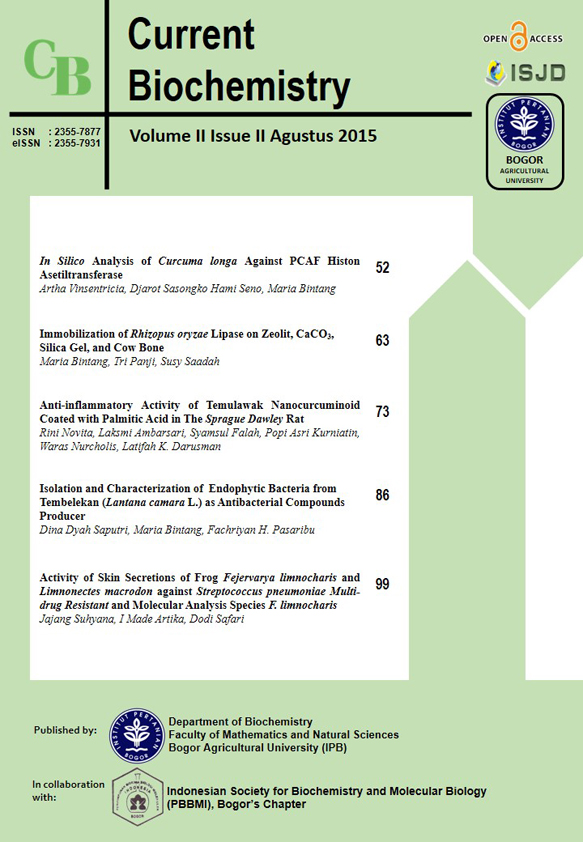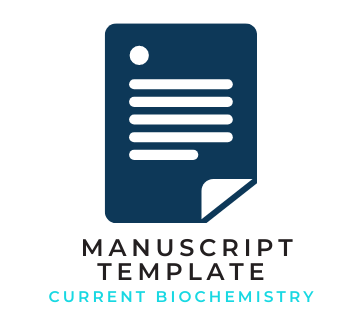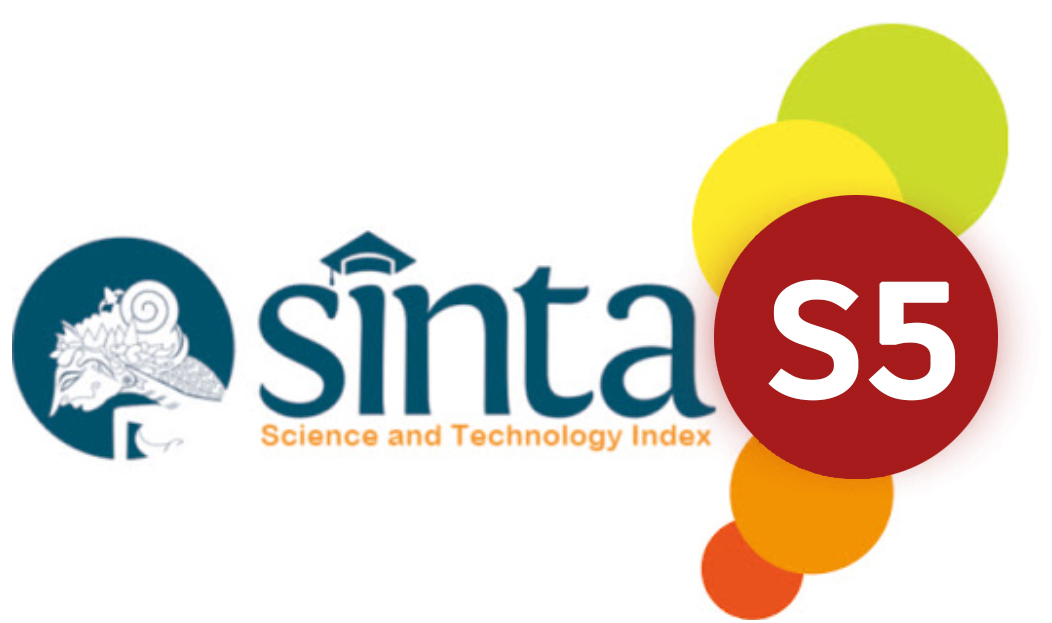Isolation and Characterization of Endophytic Bacteria from Tembelekan (<i>Lantana camara</i> L.) as Antibacterial Compounds Producer
Abstract
Endophytic bacteria are microorganisms that live in the internal tissues of plants and have symbiotic mutualism with their host plants. Endophytic bacteria may produce secondary metabolites that can be developed for medical, agricultural, and industrial purposes. Lantana camara is a medicinal plant that has therapeutic potential to treat a variety of diseases such as fever, tuberculosis, rheumatism, asthma, and skin disease. The purpose of this study was to isolate and characterize endophytic bacteria from Lantana camara which has potential to produce antibacterial compounds. The method of this research include isolation of endophytic bacteria of Lantana camara. Antibacterial activity assay was done against four types of pathogenic bacteria i.e. Bacillus cereus, Escherichia coli, Staphylococcus aureus, and Salmonella enteritidis. Characterization of endophytic bacteria was by 16S rRNA gene analysis and identification of antibacterial compounds by GC-MS analysis. Isolation of endophytic bacteria from Lantana camara resulted in BT22 as a potential isolate. Analysis of 16S rRNA gene showed that the BT22 isolate was similar to Bacillus amyloliquefaciens YB-1402 with 99% identity. The results of GC-MS analysis showed some antibacterial compounds such as: Cyclohexanone, 2-[2-(1,3-dithiolan-2-yl)propyl]-6-methyl-3-(1-methylethyl), Octadecane (CAS) n-Octadecane and Tetracosane (CAS) n-Tetracosane.References
Ahamed N. 2012. Isolation and identification of secondary metabolites producing organisms from marine sponge. Discovery. 1 (1) : 14-17.
Bhore SJ, Satisha G. 2010. Screening of endophytic colonizing bacteria for cytokinin-like compounds: crude cell-free broth of endophytic colonizing bacteria is unsuitable in cucumber cotyledon bioassay. World J. Agric. Sci. 6 (4): 345-352.
Chu KB, Jeon GC, Quan FS. 2014. Hexanedioic acid from Hermetia illucens larvae (Diptera: Stratiomyidae) protects mice against Klebsiella pneumoniae infection. Entomological Research. 44:1-8. DOI: 10.1111/1748-5967.12043.
Dalimartha S. 2007. Atlas tumbuhan obat Indonesia. Jakarta : Trubus Agriwidya.
Deepak G, Silviya S, Kishwar HK. 2009. Biochemical Compotitions and Antibacterial Activities of Lantana camara Plants with Yellow Lavender, Red and White Flowers. Eurasia. Jour. Bio. Sci. 3:69-77.
Desriani, Kusumawati DE, Rivai A, Hasanah N, Amrinola W, Triatna L, Sukma A. 2013. Potential endophytic bacteria for increasing paddy var rojolele productivity. Int. J. on Adv. Sci., Eng. and Information Tech. 3 (1) : 76-78.
Elija K, Vaishali B, Adsul MK, Deshpande NR, Kashalkar RV. 2012. Antibacterial activity of Dibutyl Phthalate : A secondary metabolite isolated from Ipomoea carnea stem. Journal of Pharmacy Research 5(1).
Filho RL, Souza RM, Magalhaes MM, Villela L, Zanotto E, Junior PMR, Resende MLV. 2013. Induced defense responses in tomato against bacterial spot by protein synthesized by endophytic bacteria. Tropical Plant Pathology. 38(4): 295-302.
Garcia A, Rhoden SA, Bernardi WJ, Orlandelli RC, Azevedo JL, Pamphile JA. 2012. Antimicrobial activity of crude extracts of endophytic fungi isolated from medicinal plant Sapindus saponaria L. journal of Applied Pharmaceutical Science. 2 (10) : 35-40.
Hallman J, Quadt-Hallman A, Mahafee WF, Kloepper JW. 1997. Bacterial endophytic in agricultural crops. Can. J. Microbiol. 43 : 895-914.
He P, Hao K, Blom J, Ruckert C, Vater J, Mao Z, Wu Y, Hou M, He P, He Y, Borriss R. 2013. Genome sequence of the plant growth promoting strain Bacillus amyloliquefaciens subsp. Plantarum B9601-Y2 and expression of mersacidin and other secondary metabolites. J. biotechnol. Page: 1-11. DOI: 10.1016/j.jbiotec.2012.12.014.
Hsouna AB, Trigui M, Mansour RB, Jarraya RM, Damak M, Jaoua S. 2011. Chemical composition, cytotoxicity effect and antimicrobial activity of Ceratonia siliqua essential oil with preservative effects against Listeria inoculated in minced beef meat. International Journal of Food Microbiology. 148: 66-72. DOI: 10.1016/j.ijfoodmicro.2011.04.028.
Jha A, Yashmeen S, Kumar DN. 2013. An innovative green synthesis of some Schiff bases and their antimicrobial activity. Int J Pharm Bio Sci. 4(4) : 197-204.
Junanto T, Sutarno, Supriyadi. 2008. Aktivitas antimikroba estrak Angsana (Pterocarpus indicus) terhadap Bacillus subtilis dan Klebsiella pneumoniae. Bioteknologi 5(2): 63-69.
Kalegari M, Miguel MD, Dias JDFG, Lordello ALL, Lima CPD, Miyazaki CMS, Zanin SMW, Verdam MCDS, Miguel OG. 2011. Phytochemical constituents and preliminary toxicity evaluation of leaves from Rourea induta Planch. (Connaraceae). Brazilian Journal of Pharmaceutical Sciences. 47(3): 635-642.
Kanimozhi D, Bai VR. 2012. Analysis of bioactive components of ethanolic extract of Coriandrum sativum L. International Journal of Research in Pharmacy and Science. 2(3): 97-110.
Katzung BG, Lofholn PW. 2004. Penentuan Penggunaan Obat dan Penggunaan Resep Secara Rasional dalam Farmakologi Dasar dan Klinik. Buku 3. Edisi Kedelapan. Jakarta: Penerbit Salemba Medika. p 609.
Kumar V, Bhatnagar AK, Srivastava JN. 2011. Antibacterial activity of crude extracts of Spirulina platensis and its structural elucidation of bioactive compound. J. Med. Plants Res. 5(32): 7043-7048. DOI: 10.5897/JMPR11.1175.
Kusumawati, DE. 2014. Isolasi dan Karakterisasi Senyawa Antibakteri dari Bakteri Endofit Tanaman Miana (Coleus scutellariodes [L.] Benth.) [Tesis]. Bogor : Institut Pertanian Bogor.
Lamb TG, Tonkyn DW, Kluepfel DA. 1996. Movement of Pseudomonas aureofaciens from the rhizosphere to aerial plant tissue. Can. J. Microbiol. 42:1112-1120.
Lin HY, Rao YK, Tzeng YM. 2007. Ferrous ion enhanced lipopeptide antibiotic Iturin A production from Bacillus amyloliquefaciens B128. Int. J. Appl. Sci. Eng. 5(2): 123-132.
Lodewyckx C, Vangronsveld J, Porteous F, Moore ERB, Taghavi S, Mezgeay M, Van DLD. 2002. Endophytic bacteria and their potential applications. Crit Rev Plant Sci 21: 583–606.
Manilal A, Sujith S, Selvin J, Shakir C, Kiran GS. 2009. Antibacterial activity of Falkenbergia hillebrandii (Born) from the Indian coast against human pathogens. International Journal of Experimental Botany. 78:161-166.
Mary KV. 2011. Studies on phytochemical screening and antibacterial activities of Lantana camara. Plant. Sci. Feed. 1: 74-79.
Nasrin S, Hossain MJ, Liles MR. 2015. Draft genome sequence of Bacillus amyloliquefaciens AP183 with antibacterial activity against Methicillin-Resistant Staphylococcus aureus. JournalsASM.org 3(2): 1-2.
Niazi A. 2014. Genome-wide analyses of Bacillus amyloliquefaciens strain provide insights into their beneficial role on plants [Disertasi]. Uppsala: Swedish University of Agricultural Sciences.
Proestos C, Chorianopoulos N, Nychas GJ, Komaitis M. 2005. RPHPLC analysis of the phenolic compounds of plant extracts. Investigation of their antioxidant capacity and antimicrobial activity. J Agric Food Chem. 53:1190–1195.
Purwanto UMS. 2013. Penapisan dan identifikasi bakteri endofit dari tanaman binahong dan ketepeng cina penghasil senyawa antibakteri patogen. Skripsi, IPB.
Qiao JQ, Wu HJ, Huo R, Gao XW, Borriss R. 2014. Stimulation of plant growth and biocontrol by Bacillus amyloliquefaciens subsp. Plantarum FZB42 engineered for improved action. Chemical and Biological Technologies in Agriculture. 1(12): 1-14.
Rossi PG, Bao L, Luciani A, Panighi J, Desjobert JM, Costa J, Casanova J, Bolla JM, Berti L. 2007. (E)-Methylisoeugenol and Elemicin: Antibacterial Components of Daucus carota L. Essential Oil against Campylobacter jejuni. J. Agri. Food Chem. 55(18): 7332-7336. DOI: 10.1021/jf070674u.
Roy S, Rao K, Bhuvaneswari CH, Giri A, Mangamoori LN. 2010. Phytochemical analysis of Andrographis paniculata extract and its antimicrobial activity. World J Microbiol Biotechnol. 26: 85-91. DOI: 10.1007/s11274-009-0146-8.
Saracoglu HT, Akin M, Demirci B, Baser KHC. 2012. Chemical composition and antibacterial activity of essential oils from different parts of some Bupleurum L. species. Afr. J. Microbiol. Res. 6(12): 2899-2908. DOI: 10.5897/AJMR11.1097.
Savadogo A, Cheik ATO, Imael HNB, Alfred ST. 2004. Antimicrobial Activities of Lactic Acid Bacteria Strains Isolated from Burkina Faso Fermented Milk. Pakistan Journal of Nutrition. 3 (3): 174-179.
Scholz R, Molohon KJ, Nachtigall J, Vater J, Markley AL, Susmuth RD, Mitchell DA, Borriss R. 2011. Plantazolicin, a novel Microcin B17/Streptolysin S-like natural product from Bacillus amyloliquefaciens FZB42. J. Bacteriol. 193(1): 215-224. DOI: 10.1128/JB.00784-10.
Seo WT, Lim WJ, Kim EJ, Yun HD, Lee YH, Cho KM. 2010. Endophytic bacterial diversity in the Young Radish and their antimicrobial activity against pathogens. J. Korean Soc. Appl. Biol. Chem. 53(4): 493-503.
Shkiri FH, Soussi LSR, Zakhama AEA, Mahjoub A, Flamini G, Jannet HB. 2014. Chemical composition and antibacterial activity of essential oils from the tunisian Allium nigrum L. EXCLI Journal. 13: 526-535.
Shittu LAJ, Bankole MA, Ahmed T, Bankole MN, Shittu RK, Saalu CL, Ashiru OA. 2007. Antibacterial and antifungal activities of essential oils of crude extracts of Sesame radiatum against some common pathogenic microorganisms. Iran J Pharmacol Ther 6:165–170.
Sylvia D, Fuhrmann J, Hartel P, Zuberer D. 2005. Principles and Application of Soil Microbiology. Pearson Education Inc. New Jersey.
Simarmata R, Lekatompessy S, Sukiman H. 2007. Isolasi mikroba endofit dari tanaman obat sambung nyawa (Gymura procumbens) dan analisis potensinya sebagai antimikroba. Berk Penel Hayati 13 : 85-90.
Singh V, Chaudhary DK, Mani I. 2011. Molecular characterization and modeling of secondary structure of 16s rrna from Aeromonas veronii. International Journal of Applied Biology and Pharmaceutical Technology. 3 (1): 253-260.
Sonibare MA, Soladoye MO, Ogunlana YE. 2007. A chemotaxonomic approach to the alkane content of three species of Anthocleista Afzel. (Loganiaceae). Afr. J. Biotechnol. 6(13): 1516-1520.
Suhada A. 2013. Identifikasi senyawa dalam ekstrak batang Songga (Strychnos ligustrina) dengan metode GC-MS [Tesis]. Yogyakarta: Universitas Gadjah Mada.
Sukadana IM, Santi SR, Juliarti NK. 2008. Aktivitas antibakteri senyawa golongan triterpenoid dari biji Pepaya (Carica papaya L.). Jurnal Kimia. 2(1): 15-18.
Tan KH, Nishida R. 2012. Methyl eugenol: Its occurrence, distribution, and role in nature, especially in relation to insect behavior and pollination. Journal of Insect Science. 12(56): 1-74.
Uddin SJ, Grice D, Tiralongo E. 2012. Evaluation of cytotoxic actvity of patriscabratine, tetracosane, and various flavonoids isolated from the Bangladeshi medicinal plant Acrotichum auruem. Pharmaceutical Biology. 50(10): 1276-1280. DOI: 10.3109/13880209.2012.673628.
Uma B, Parvathavarthini R. 2010. Antibacterial effect of hexane extract of sea Urchin, Temnopleurus alexandri (Bell,1884). Int. J. PharmTech Res. 2(3): 1677-1680.
Zinniel DK, Lambrecht P, Harris BN, Feng Z, Kuczmarski D, Higley P, Ishimaru CA, Arunakumari A, Barletta RG, Vidaver AK. 2002. Isolation and characterization of endophytic colonizing bacteria from agronomic crops and prairie plants. Applied and Environmental Microbiology. 68(5): 2198-2208.










